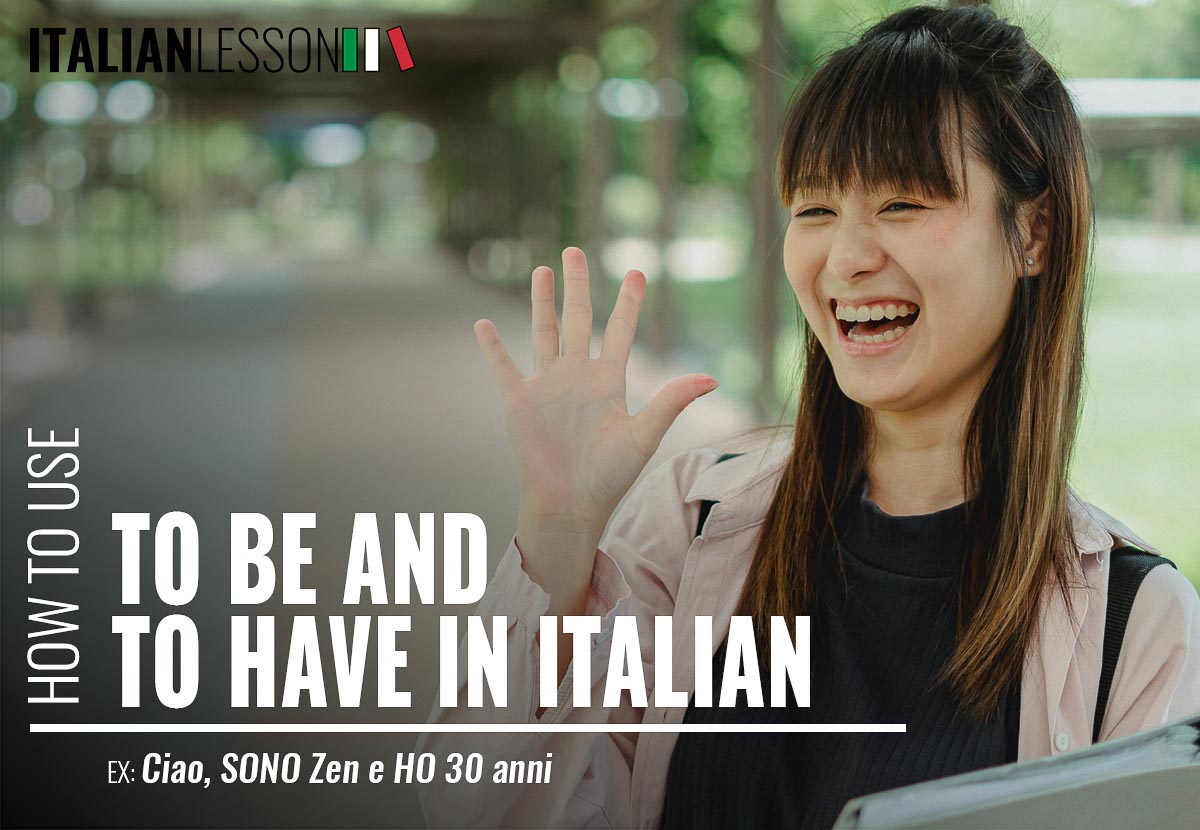
Italian grammar: verbs “to be” and “to have”.
When you start learning Italian, it’s not easy to keep in mind these two verbs (they are irregular but we’ll talk about this later) but studying them is an important feature of your Italian vocabulary and then, let’s be honest, isn’t it cool to get a good Italian pronunciation? But before pronunciation, we need to study the grammar and all its limitless textures!
Before thinking about pizza and other peculiarities, you have to know how to order special food in restaurants or how to buy pasta, so… Why don’t you learn more about one of the cornerstones of Italian grammar? Yes, I’m talking about the two most important verbs in this special language! The verbs to be and to have. They represent the foundation on which all grammatical constructions are based.
An Italian verb, in this case the verbs to be and to have, can convey different meanings and states of mind; for example, the verb to be is used to talk about work (I am a teacher) but also to describe someone or something (You are tall); the verb to have is used for age (very different from English)
Ho 27 anni / I’m 27 years old
but also to convey the concept of possession
Io ho un cane / I have got a dog
But wait, first of all, you need to learn the Italian verb conjugation of every verb that you “meet” in your everyday study with an Italian verb, that’s why we are going to conjugate the verb to be:
ITALIAN “ESSERE” CONJUGATION
| Io sono Tu sei Egli / Ella è Noi siamo Voi siete Essi / Esse sono | I am You are He / She / It is We are You are They are |
Let’s do some examples:
Io sono Paolo – I am Paul
Lei è una ballerina – She is a dancer
Noi siamo una squadra – We are a team
And the verb to have?
Another challenge for non-Italian speakers! Both the verb to be and the verb to have are irregular verbs, which means that they have fun changing and creating chaos among students! Just kidding!
Let’s have a look at the conjugation of the verb to have:
| Io ho Tu hai Egli / Ella ha Noi abbiamo Voi avete Essi hanno | I have got You have got He / She / It has got We have got You have got They have got |
Examples:
Io ho una sorella – I have got a sister
Lui ha una bella auto – He has a nice car
Noi abbiamo un cottage in montagna – We have got a cottage in the mountains
Here is a link to another in-depth study on the subject: https://www.treccani.it/enciclopedia/avere-o-essere_%28La-grammatica-italiana%29/
So far, we’re talking about these two verbs in the Italian mood called INDICATIVO, which includes the Italian present tense that we’ve conjugated previously.
In Italian grammar there are also other tenses but, first of all, it’s important to focus on and to study this tense because it serves as the basis for the development of all other tenses.
Finally, before saying goodbye, how about playing a pronunciation game?
The Italian pronunciation is, in some ways, less difficult than the English one because the words are read the same way they are written but there is always some irregularity! For example, in English there are words with a silent “h” and in Italian, for example with the verb to have, it’s the same!
Example:
English: an honour – (silent H) Italian: Io ho (I have) – (silent H)
Well, that’s just the first drop of Italian grammar for you today! Keep on studying and you’ll improve your skills every day!
See you next time!
